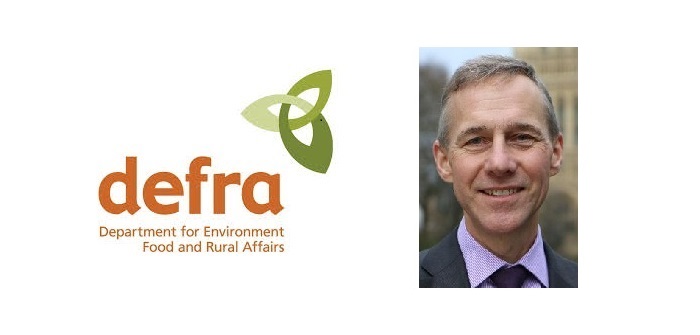By Nigel Gibbens, outgoing chief veterinary officer
The CVOUK is a fascinating role. Internationally the CVOUK represents the whole of the UK, maintaining our world-leading reputation for animal health and welfare and negotiating and facilitating our exports globally. Domestically the CVOUK leads on disease control in England, and works with the CVOs for Scotland, Wales and Northern Ireland to ensure that together we deliver a coherent and effective animal health and welfare system for the UK.
We work with a host of people in different organisations and roles who actually make things happen. Not just in Government and its agencies, or our local authority and contracted partners in practice, but also animal keepers themselves, as individuals as well as in sector organisations, and the vets that serve them on a day to day basis. There is almost nothing that the CVO does single-handedly, except to communicate publicly what we do and why, and sometimes working privately at the pointy end of a particularly difficult negotiation – on trade, for example, or when directly advising our Ministers.
What does success look like? It’s tempting to say disease outbreaks that are well managed; spotted early, stamped out, exports recovered and on we go! There have been plenty of those in the last ten years and we’ve dealt with them effectively and without turning those challenges into crises.
Avian flu, of course, with an unprecedented 13 outbreaks in the 2016/17 series; bluetongue eradicated by vaccination in 2008; equine infectious anaemia in 2010 and 2012; anthrax in 2015. Don’t forget the zoonoses – E.Coli at petting farms, food borne salmonella incidents – identified and managed routinely so that they are almost overlooked.
All these challenges come and go, many will return, and there are new ones yet to come. Reducing the risk of antimicrobial resistance is the great challenge of our time and I am excited by the concerted response of our livestock sectors, with the potential for a step change in endemic disease control.
However, the next epidemic challenge might be much bigger, last longer, cause heavier losses than we have seen since Foot and Mouth Disease in 2001.
Would that be failure? Not if it is tackled effectively and we do our best from the very start.
For me success is that the UK has in place all the key elements of an animal health system that can deliver effective disease control and good animal welfare. The CVOs must strive constantly to ensure that system can evolve with a changing world but remains fit for purpose.
I don’t want to drift into a textbook on veterinary public health, but what keeps me up at night:
- Keeping a core capability of vets and animal health and welfare specialists, locally present and networked, highly skilled and motivated to lead any disease response as well as ongoing assurance that regulations to protect animal health and welfare are met
- Detailed contingency plans, regularly practiced.
- Livestock identification and traceability that is close to real time so that we can chase disease down quickly
- Surveillance systems that capture emerging disease at the earliest possible stage, drawing on public and private information and linking animal and human sources.
- Laboratories and scientists working in them that are world-leading and internationally collaborating.
- Partnerships at all levels, across the UK, across Government departments and delivery bodies, with veterinary and sector bodies. Not just to respond but also to ensure that our plans and policies are shared and are as good as they can be.
I’m proud to say that the UK remains well placed. Our systems work. But we should not take them for granted. Our laboratories require huge resource commitments to maintain. Our surveillance systems are being overhauled as our animal sectors move increasingly from reliance on Government diagnostic services and we need to harness all the available animal health data from a wide range of sources to ensure early warning of change. Livestock identification and movement reporting needs to move into the 21st Century and can serve much more than disease tracking to underpin the quality and provenance of our livestock products. Turkey uses mobile phone technology for animal movements, we still use paper!
The whole system relies on partnership working, a modern animal health capability cannot simply be visited on animal keepers by Government agents. We can’t afford it and it wouldn’t work!
The single most impressive change that I’ve seen during my time as CVO is the engagement of the livestock sectors, with the leadership of the Responsible Use of Medicines in Agriculture Alliance, to produce individual sector specific plans to reduce antibiotic use through improved animal health and welfare. I am really pleased to see these plans in place and moving forward as I step down from the CVOUK role.


